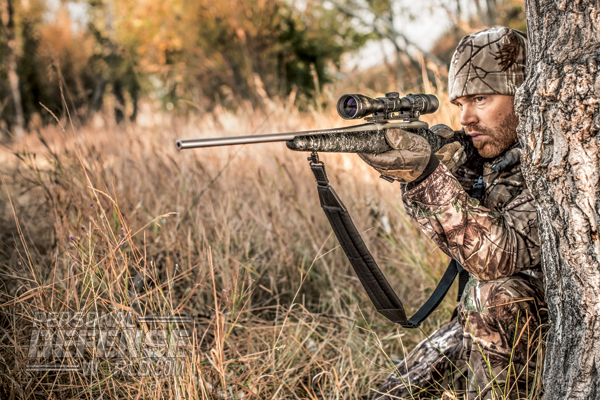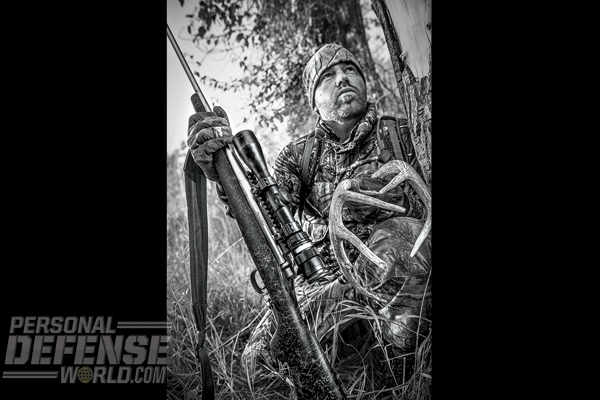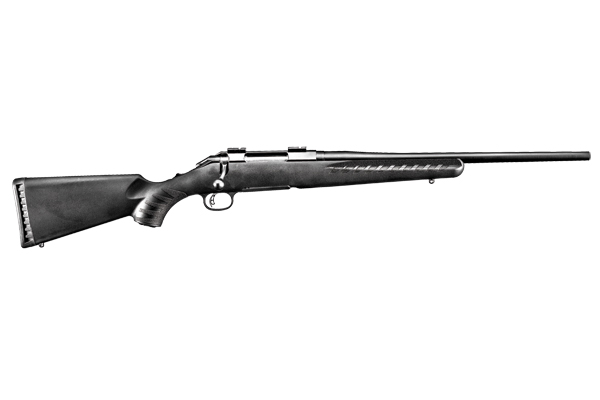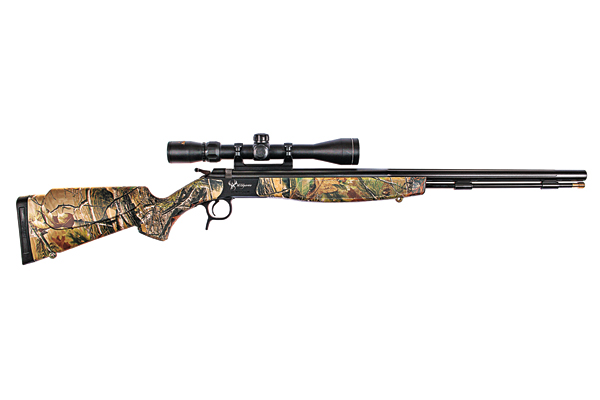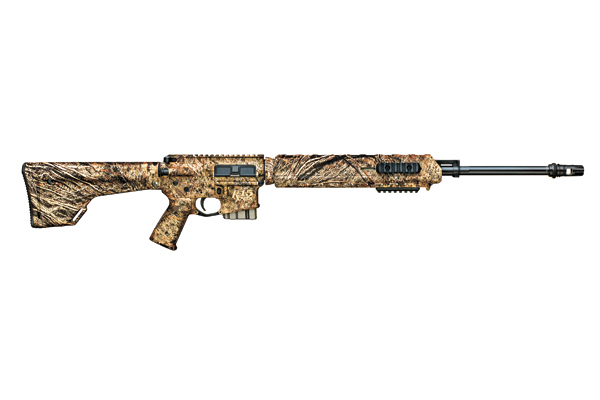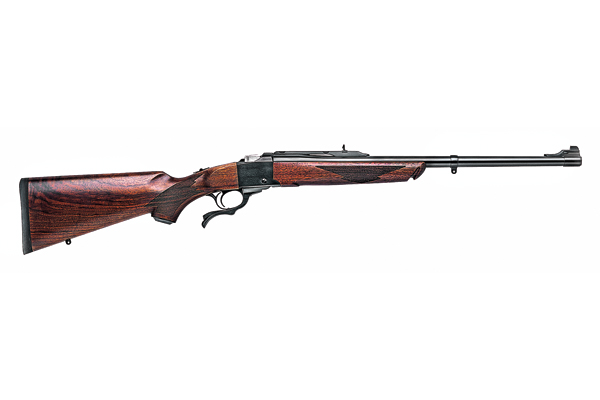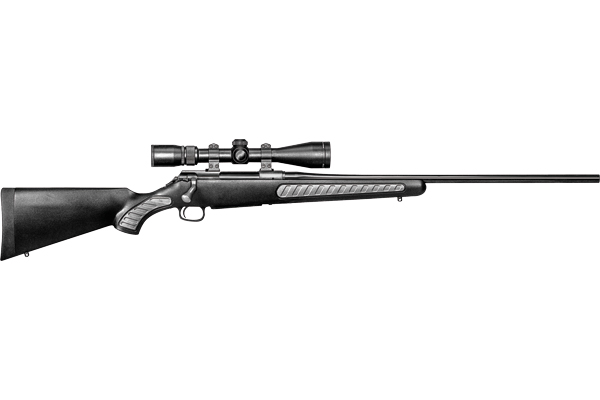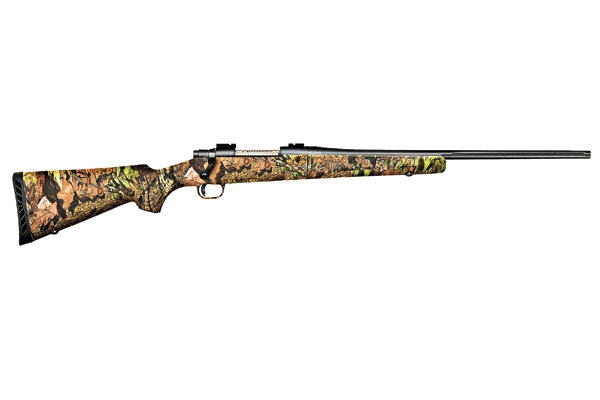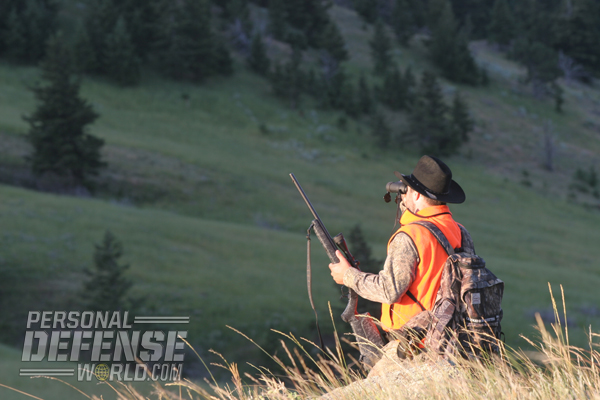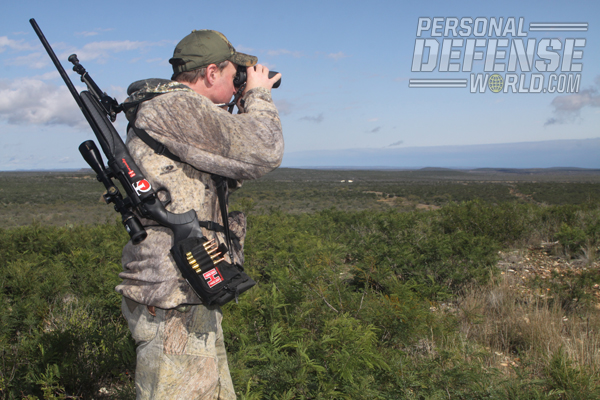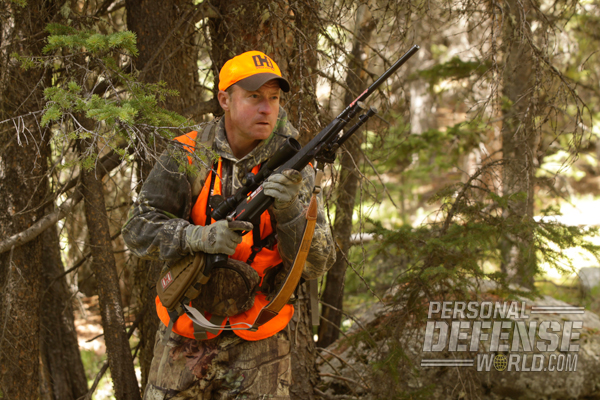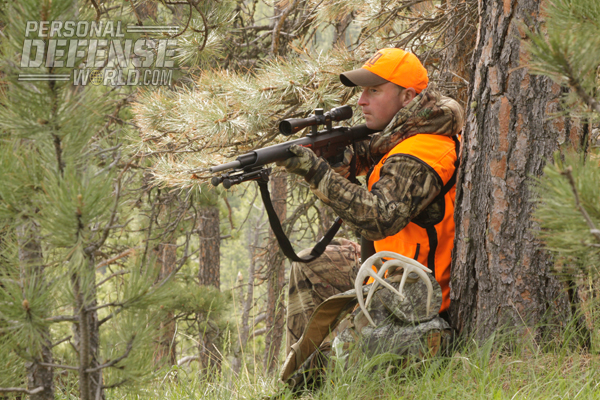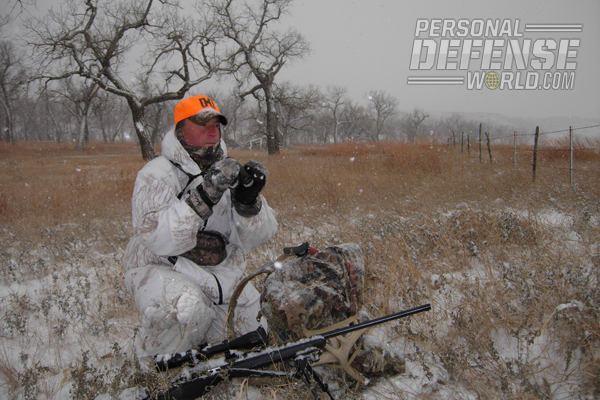When I hear the term “brush gun,” without hesitation I think of the late Texan John Wooters squinting down the barrel of a lever action with the brim of his trademark camouflage cowboy hat tugged low to avert the searing sun. I get a different image when the term “sniper” comes up in conversation. Sure, you might think of Mark Wahlberg’s character in the movie Shooter, but not me. I see a middle-aged man adorned with round, wire-rimmed glasses resting a classic Winchester Model 70 over a rock preparing to topple a bighorn ram. Sure, Jack O’Connor may not be as Hollywood as Bob Lee Swagger, but he certainly could shoot a .270 Win, near or far.
Brush and sniper rifles may seem as far apart as Republicans and Democrats, but could one rifle handle everything from a South Carolina swamp hunt to the cross-canyon shots you might encounter in Idaho? With the economy still sputtering like a carbureted truck rumbling along a timberline, outfitting yourself with one good rifle makes more sense today than ever.
In addition to money savings, hunting terrain varies widely, even from property to property. Whereas 50 years ago your relatives may have met at hunting camp and tromped the same mountain for deer, today you have the freedom to drive across county/state lines and even to other regions of the nation to deer hunt. Being prepared for a bean-field shot or a morning of rattling in the Texas mesquite country is commonplace for many of you. And as modern machinery size progresses, clearing large expanses for food plots, fields and shooting lanes becomes easier whether you’re manicuring land in Pennsylvania or in Montana.
Advertisement — Continue Reading Below
Not being a brush country native, I generally armed myself with rifles capable of the long shot, but on nearly every whitetail hunt I found myself entering the river jungles at some point during the day. This one was no different as I snuck from the riverbed to the upper bank and smack into the bedroom of the local whitetail population. Minutes later, my rattling was in full play and from the corner of my right eye I caught sight of a deer slipping through the brush my way. Willows, Russian olives and tall grass all combined to screen the buck as I strained to see antlers. Then, in a Moses-like moment, the grasses parted and a mature buck poked out its head.
My bolt action may have appeared ready for an Afghanistan-sniper outing, but with the scope dialed down to 4x and a mid-range barrel length in play, I was swinging the rifle with ease as the buck swapped ends in hurried retreat. As he leapt, his body gave me a split-second, quartering away opportunity, and I ended the hunt using a traditional deer rig in a near-zero-visibility environment.

Rifle Caliber
Advertisement — Continue Reading Below
You can kill a deer with a .22 LR, but why? A good deer caliber is capable of quickly and cleanly dispatching a deer at close range and out to 300 yards, or beyond. That means it should have a relatively flat trajectory, maintain foot-pounds of energy and deliver a 120-grain (or larger) bullet with precision. This definition describes both brush and sniper situations, except for the factor of “brush busting.”
“What about the classic .30-30 Win brush buster? It’s just too slow and doesn’t have the zip for a sniper encounter. Close the book, end of story…”
In that scenario I believe the anti-drug message of “just say no” is great advice. Over the years, it’s been argued that round-nosed bullets versus those with a more spire-point configuration will drive right through brush. That may be so in many instances, but it’s still no guarantee. High-sectional-density bullets also have been tested to deflect less, but again it’s not a guarantee. And yes, high-velocity calibers are more likely to deflect and possibly even fragment upon brush impact. The common denominator in all these scenarios is a big “maybe.” So again, the answer to trying to force a brush-blocked shot is to just say no.
Trying to recommend the best deer caliber is like discussing religion or politics. Everyone’s views differ based on experience, recommendations and from manufacturer marketing. Given that obstacle, let’s begin with one benchmark: foot-pounds of energy. Most experts agree that it takes a minimum of 1,000 foot-pounds of energy for a clean kill. I like to bump that up to 1,200 foot-pounds or more, and that energy has to be delivered at any range you feel capable of handling. For most that includes a range of 300 yards or less. With a good rest, most of you can smack targets all day long at 200 yards. With some practice, 300 yards comes easy and 400 yards begins to stretch the comfort zone of many. Of course, a handful of you have confidence to 500 yards and beyond with diligence.
Advertisement — Continue Reading Below
To deliver a bullet with 1,200 foot-pounds of energy out to 300 yards or beyond, you need a high-velocity caliber, and that means forgoing the smaller favorites. Borderline calibers that should likely be shelved include everything from the .257 Weatherby on down. That takes in the popular .25-06 and the .243 Win. Sure, they’ve accounted for lots of white freezer packages, but with dicey shooting scenarios at longer range these calibers lack adequate energy delivery.
On the low end, the 6.5mm Creedmoor fits the definition, as does Jack O’Connor’s favorite, the .270 Win. Others to review include the .280 Rem, 7mm-08 Rem Mag, .308, .30-06 and the .300 Win Mag. A handful of others also slip into this range, but going much larger is overkill.
What about the classic .30-30 Win brush buster? It’s just too slow and doesn’t have the zip for a sniper encounter. Close the book, end of story.
Advertisement — Continue Reading Below
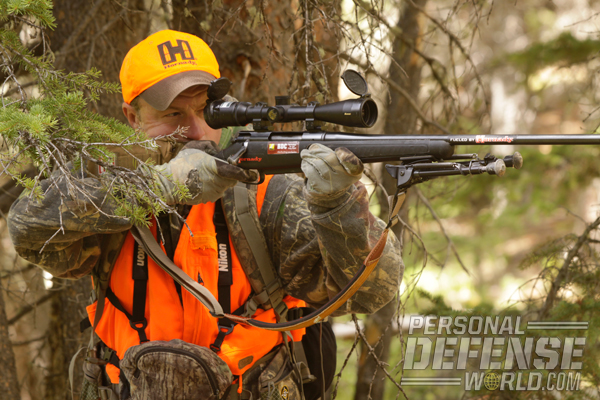
Rifle Configuration
When shopping for a rifle to handle it all you’ll be faced with a myriad of choices in actions. Two that I believe should be bypassed include the lever action and the pump action. Both have proven worthy, especially in brushy environments, but lever actions are limited in long-range caliber options and pumps are…well, they’re pumps and you again have limited options (basically the Remington 7600). Although some pumps are accurate, you’d be better served looking at the following action choices. Argue the point at your convenience.
Advertisement — Continue Reading Below
“Not quite lightweight, ARs average about 9 pounds without optics and can be modified with aftermarket products to cut weight further…”
The single-shot has surprisingly exploded with Thompson/Center’s promotion of the Encore and Encore Pro Hunter models. Ruger was already established with the No. 1, and others have joined the fray, such as Connecticut Valley Arms, by providing economical versions. Single-shots are generally compact, accurate and easy to operate. Obviously, you only get one shot, but with practice you can reload in seconds, and that one shot forces you to make “the best shot.” In closing, single-shots should be considered because of their nimble frame and accuracy.
Next on the list is the semi-automatic. Many have landed on the marketplace, including the Remington Model 750. In the right hands, the semi-automatic rifle is obviously fast and quick for a follow-up shot, and it’s also quiet. Actions work so swiftly the cycling noise is covered by the report of the rifle. Today you have more options than the traditional semi-auto deer rifles of yesterday with the unstoppable outbreak of black guns.
Hardly black any longer, AR-style rifles have combined military-proven technology with refinements for today’s hunter. These semi-automatics now come in camouflage and in a variety of calibers to handle most dual situations. Remington’s R-25 comes in the 7mm-08 Rem, and most brands offer ARs in the .308. Both meet the minimums for a great dual-purpose rifle. ARs are built relatively short and ergonomically friendly to make a highly maneuverable firearm.
Advertisement — Continue Reading Below
One of the most distinguishing features of the AR is its true pistol grip. This offers optimum control of the firearm and the ability to move it quickly from rest to the ready position, in addition to lightning-fast aiming. A straight-line design also aids in aiming with a barrel and stock in complete alignment with each other. If you compare the lengths of popular models of ARs such as Remington’s R-25 and the ArmaLite AR-10, you’ll see the range from 35 inches to nearly 41 inches in overall length. Most AR rifles are slightly shorter in length than the average factory bolt-action rifle that begins at 41 inches. Some bolt-action magnum calibers sport overall lengths of 46 inches.
Not quite lightweight, ARs average about 9 pounds without optics and can be modified with aftermarket products to cut weight further. Collapsible stocks, composite forearms and light riflescopes can trim a pound or more from the overall weight of your AR. Finding these aftermarket products is hassle-free with a few minutes of online shopping.

Bolt Actions
Advertisement — Continue Reading Below
I saved the best for last. Few can argue that the bolt action deserves top consideration for an all-around rifle for brush and open country. Bolt actions are accurate, even more accurate than most single-shots, plus you get multiple shots. They’re dependable and rarely malfunction. They come in an infinite variety of sizes, shapes, calibers and material construction. For those who like craftsmanship, you can peruse wood varieties with blued barrels.
New, budget-minded models on the market to fit these criteria include the Thompson/Center Venture. With a price of $500 or less, the Venture is easy on the bank. Depending on the caliber, it comes in 22- or 24-inch barrel lengths with an overall length of under 44 inches and a weight of 7 pounds. And if you have a youth or a smaller-sized shooter, the Venture comes in a compact model. Weather Shield options provide extra weather protection, 50-times better than stainless as advertised by T/C. Plus the Venture comes with a MOA guarantee. With 16 caliber choices, plus nearly a dozen calibers that fit dual criteria, the Venture is a tough choice to ignore.
“The Ruger receives top consideration for an affordable dual-purpose rifle…”
On similar ground is the Ruger American Rifle. It weighs a dainty 6.38 pounds, making the composite-stock rifle easy to tote. Standard models extend 42 inches and the compact model, with deer-pounding calibers, hit the market at just under 37 inches. That length makes it a dream to swing in cover.
Advertisement — Continue Reading Below
Consider the 7mm-08 Rem, .270 Win, .30-06 and the .308. Sub-MOA groups are possible due in part to Ruger’s patent-pending Power Bedding system, which utilizes stainless-steel bedding blocks insert-molded into the stock to lock the receiver and free-float the barrel. Add an easy-to-adjust trigger, detachable magazine and three-lug bolt and you get a great rifle for under $450. The Ruger receives top consideration for an affordable dual-purpose rifle.
Mossberg has also come into the bolt-action market strong with both the ATR and the 4×4 models. Both come in composite and wood stock models. Although the 4×4 offers many great features, its slightly heftier weight and its overall length (46 inches) give the ATR top nod. Most ATR models are a moderate 42 inches in length and average 7 pounds (or under) for short- or long-action models. Calibers include the popular 7mm-08 Rem, .308, .270 Win and .30-06. If you want buck-buster calibers, look at the 4×4 with offerings in .300 WSM, 7mm-08 Rem Mag and the .300 Win Mag, among others.
The ATR also includes an adjustable trigger, camouflage or black synthetic stocks, and a 22-inch fluted barrel. Does your bank account need a real break? The ATR can be had for as little as $366.
You can’t go wrong when shopping Remington’s expansive line-up of Model 700 actions, the Model Seven or even the 770. The options are mind boggling, but great for those who believe gun shopping should be similar to shopping for and accessorizing a truck.
A quick-handling Model Seven to consider would be the Synthetic bolt action in 7mm-08 Rem or .308. At just over 36 inches and 6.13 pounds, this rifle is easy to maneuver and light to tote, yet it gives you long-range performance. It’s a bit spendier at more than $700, but Remington 700 actions are highly respected. If you want to stay in the low-cost range, check out Remington’s Model 783. At just over 7 pounds and between 42.63 and 44.63 inches, you get the choice of top calibers like the .270 Win, .30-06, .308 and the 7mm-08 Rem Mag. The best part is the price, at a starting point of $451.
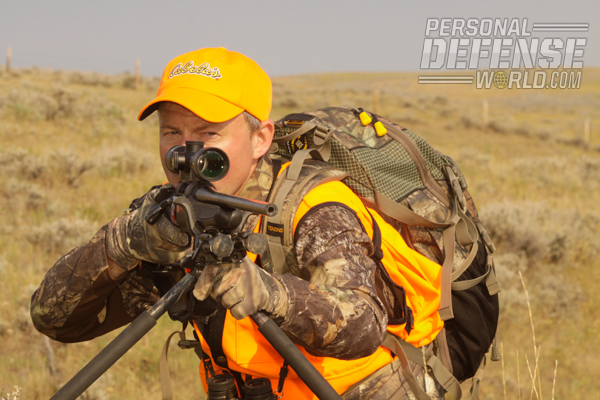
Rifle Optics
At least for the North American big game hunter, the debate is over. There’s no reason to go with a fixed-power riflescope. Variable-power scopes rule, especially when rigging a rifle for cattail encounters or sagebrush stalks.
As variable riflescope technology expands so do the options. Early options that top many rifles today include the 3-9x models. Customer and marketing demands soon had manufacturers bumping that to 3-12x and even 4-16x models. Variables now exceed those ranges with models going beyond the 20-power maximum range.
“You don’t have to go big to be accurate…”
To handle brush-to-sniper scenarios, consider which fixed-power scope would be ideal for a surprise meeting in thick cover. Most would lean to a 3x or 4x power, so consider that for the low-end setting. High power is as personal of a decision as the deodorant you wear. For most, 9x to 16x handles 400 yards with ease. I prefer 16x for the simple reason that a larger target boosts my confidence when I plant the crosshairs.
Any good riflescope should offer ease in changing the power with a simple turn to increase or decrease power. Plus it should include focus adjustment to keep the image clear regardless of the power setting you choose or distance of shot. A side focus parallax adjustment is easy to find and manage when seconds count.
Lastly, you don’t have to go big to be accurate. This means you can save a few dollars and bypass the larger objective riflescopes over standard models with a 42mm objective. Why? First and foremost, you want to keep your rig as lightweight as possible.
Second, larger objectives do transmit more light, but only if combined with proper multi-coatings on the lenses. A 42mm objective riflescope could be as bright as a cheaper, 50mm-objective model with limited optical coatings. Plus, when you shop for riflescopes consider the fact that most shooting hours begin at one half-hour before sunrise and end one half-hour after sunset, that’s a window most 42mm objectives can handle. Look for riflescopes that transmit 90 percent of the available light; 95 percent is even better.
Here’s a hunting tip. Pay attention to your power settings. As you transition through a hunt, adjust the power settings to match the terrain settings. If you enter a woodlot to rattle whitetails, drop the power to 4x in anticipation of fast action at close range. If you move to a meadow, bump the power to 6x or 8x. Never turn the power way up until the situation arises. When that 300-yard opportunity happens, you’ll have time to range, rest and crank up the power. If you don’t have time for this, you should question whether you have time for a challenging shot. And lastly, take advantage of the various manufacturers’ reticle options and online technology to boost long-range accuracy.
Every shooter has a different idea of what rifle fits their hunting style best, but there’s no need to load a gun vault up with a variety of options when some careful planning will give you one rifle for hunting deer near or far.
Connecticut Valley Arms
https://www.cva.com; 770-449-4687
Mossberg
https://www.mossberg.com; 800-363-3555
Remington
https://www.remington.com; 800-243-9700
Ruger
https://www.ruger.com
Thompson/Center Arms
https://www.tcarms.com; 866-730-1614
